
Pokemon Sword & Shield Review
In my opinion, there are two types of games that you’d write middling reviews for – ones that don’t really accomplish anything special in any particular category, and those that succeed in some but falter miserably in others. The latter type, undoubtedly, are the ones that are harder to review. Pokemon Sword and Shield are those types of games.
Pokemon Sword and Shield are the first 8th Generation Pokemon games, and the first truly new titles to hit the Nintendo Switch. This makes them the first mainline games developed from the ground up for a system that can be used as a home console, and the first major titles in the series (excluding Pokemon Let’s Go) to cost a full $60 or regional equivalent. So, what does the game bring to the table to showcase the new platform and the new price point? Unfortunately – not that much.
The new Pokemon added to Sword and Shield, generally, look great. Most of them really resonated with me, and in general, I found myself enjoying the Galarian forms of returning monsters much more than the Alolan forms from Sun and Moon. They’re not just limited to Generation 1 monsters this time around, and there’s a few of them that now evolve into entirely new monsters. They’re awesome, and I ended up using some of them – like Sirfetch’d – for more or less the entirety of my playthrough. Even some weirder monsters, like Applin, ended up maintaining a spot in my team. I also loved just how many unique evolution methods that Gamefreak has managed to squeeze into the new monsters – Galarian Farfetch’d, for example, requires you to execute 3 Critical Hits during a single Pokemon battle. I was always excited to see exactly which new Pokemon I might find every new route I entered.
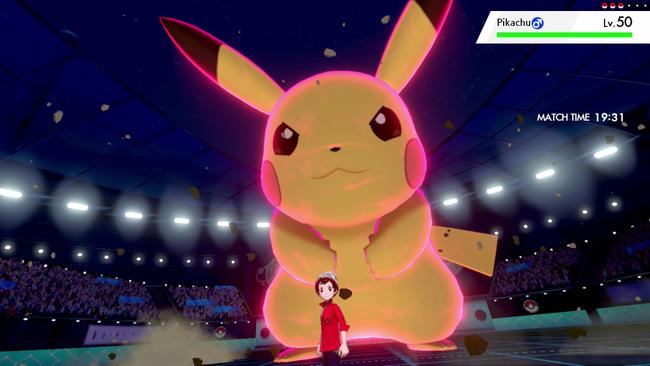
That being said, I hesitate to say that players “explore” the Galar region, outside of the Wild Area that makes up a good portion of the games’ new features. For me, a core tenet of the Pokemon series has always been the optional areas that you could explore – the dungeons you could find, with rare Pokemon or interesting encounters waiting for you. I grew up playing Generation 2 and 3, with areas like Mt. Silver housing Larvitars and that one room in Meteor Falls holding Bagon – areas off the beaten path that I could well and truly discover. Besides the Wild Area, there is exactly zero optional areas for players to visit in Pokemon Sword and Shield, and essentially zero dungeons. The routes and “dungeons” that do exist are short, linear, and the specific order for which routes you are allowed to explore is tightly controlled with roadblocks and story progression.
Pokemon as a series has been gradually transforming into much more linear adventures over the last couple of games, but Sword and Shield is finally the entry that cut out optional areas entirely in lieu of exploring the Wild Area. If the Wild Area had either been expanded just a little more, or if it was part of the game in addition to dungeons, I wouldn’t have any real problems with it. As a concept, the Wild Area is great. You set foot in it very shortly after receiving your starter Pokemon, and it really opens things up for party composition from the word “go”. There’s never been a Pokemon game with this much team variety so early on, and it’s one of a few truly great additions to the game.
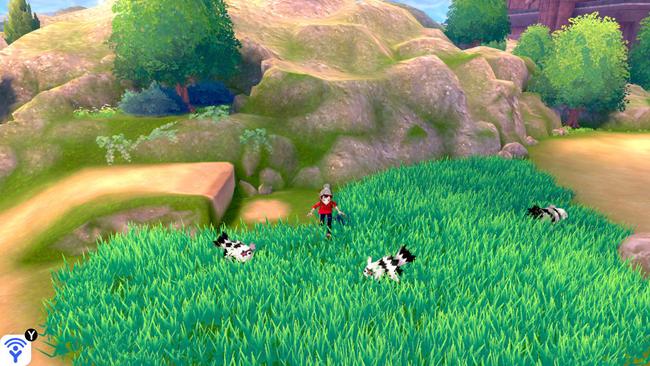
The Wild Area is filled to the brim with a variety of different biomes, each of which can house entirely different Pokemon depending on the weather at any given time. Additionally, fully evolved Pokemon can be found roaming around for players to run into. However, you won’t be able to catch most of them until closer to the end of the game. While previous games in the series have restricted what Pokemon will listen to your orders depending on the number of Gym Badges you had accumulated, Sword and Shield instead limit which Pokemon you can outright catch based off of your current story progression.
As for the rest of the game, your main objective – or, rather, only objective – is to follow along the route for the Galar Region Gym Challenge. You see – unlike in previous games where challenging the gyms were sort of secondary to the actual story surrounding the “evil team” and whatever legendary Pokemon that they wanted to abuse for their own nefarious schemes, Pokemon Sword and Shield’s primary plot thread is the actual act of tackling gyms, competing against other trainers doing the same, and the explicit goal of both you and your rival Hop attempting to overthrow the current Galar region’s “Unbeatable Champion” - Hop’s brother, Leon.
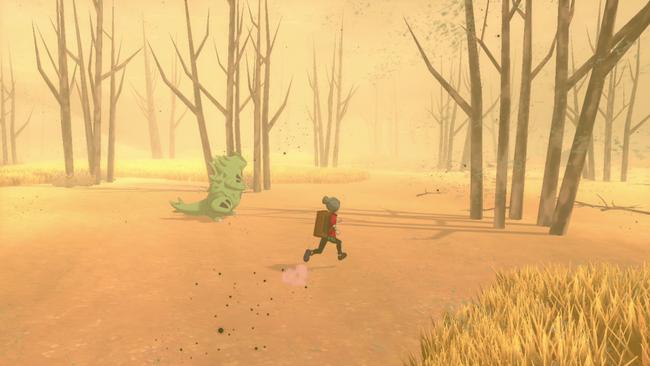
In practice, the story is very hit or miss. Since there’s a special emphasis on the Gym Challenge this time around, the story makes an effort to have the various gym leaders be – well, actual characters! Gym leaders actively participating in the plot was one of my favorite things about Pokemon Black and White back on the DS, and Sword and Shield follow in that game’s footsteps here. The gym leaders aren’t just cooped up in their gyms, and you’ll even see many of them out and about, doing things to move the plot forward. Maybe it’s not a huge bar to clear, but I appreciated it nonetheless.
Absolutely the most positive thing I have to say about Sword and Shield are the gyms themselves – they’re easily the best that the series has ever had, and most of the challenges that each of them present on your way to challenging each leader is some of the most unique in the series history. From competing with a gym trainer that’s trying to catch the same Pokemon you’re after, to answering quiz questions correctly to avoid having your Pokemon’s stats debuffed, and more. I can’t really attest to the Pokemon Shield exclusive gyms yet, but the Pokemon Sword exclusive Fighting and Rock Type gyms were particular highlights for me. It’s a shame that the last two gyms in the game felt more than a little subdued in comparison to the rest – but if absolutely nothing else, Gamefreak nailed the experience of challenging the gyms this go around.
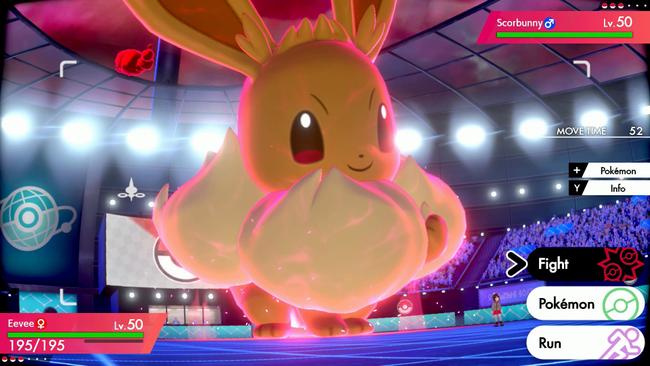
This is probably a good opportunity to talk about the games’ new battle mechanic – Dynamaxing. Pokemon Sword and Shield have completely axed both Mega Evolutions and Z-Moves, the main battle gimmicks from Generation 6 and 7 respectively. Instead, they’ve introduced “Dynamaxing”, wherein a Pokemon turns into a Godzilla-esque freak and gains access to seriously buffed moves and stats for a set number of turns. In practice – it’s sort of like a mixture of both Mega Evolutions and Z-Moves at the same time, with the benefit that every Pokemon can Dynamax, while only specific Pokemon had access to Mega Evolutions.
I’m of two minds about the system. On one hand, you can only Dynamax during specific encounters during the story, during Max Raid Battles, and during Local/Online Wireless battles. On the other hand, again, it offers more utility for more Pokemon. While I'll miss the inclusion of Mega Evolutions, Dynamaxing is probably better implemented on a wider level. Before launch, my biggest issue with the system was that I felt that we were losing all of these cool Mega Evolution designs for Big Pokemon. However, there are a few select Pokemon that can “Gigantamax” - giving themselves unique models, much like with Mega Evolutions, and their own special G-Max moves. That’s cool! However, it comes with some caveats.

I’ll just get it out of the way – despite the Wild Area, Pokemon Sword and Shield feel like they’re more than a little anemic on content. Unless you spend a bunch of time in the Wild Area in-between story beats, you’re liable to finish the game in under 20 hours – and once you do, there really isn’t much left for you to tackle. While in previous games you might have a couple of legendary Pokemon for you to wrangle, optional areas for you to explore, and an in-depth post-game battle facility for you to tackle, Sword and Shield’s post-game feels anemic. The only two legendary Pokemon you can catch in the game is one relegated to the story, and another – the box legendary – that is instead relegated to a short, post-game, epilogue. While there IS a Battle Tower, it’s probably one of the simplest incarnations of it since its inception in Pokemon Crystal on the Gameboy Color.
Instead, the primary post-game content is wrangling Gigantamax Pokemon from Max Raid Battles, which are essentially the game's answer to catching the various legendary Pokemon from other games in the series. This wouldn’t be too much of a problem, except for a few key points – namely, that these endgame raids are entirely balanced around multiplayer, and the system in place here is by far the worst implementation of it that the series has ever seen.
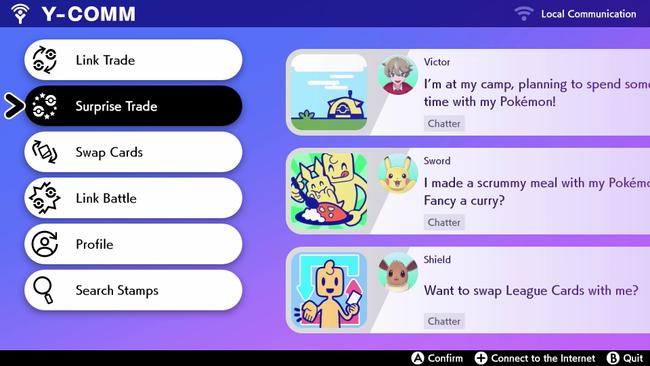
Let’s talk about Y-Comm. It's bad. Unlike previous games in the series, it is 100% impossible to directly interact with someone online. If you have someone on your Switch’s friend list, you can’t outright tell, from in-game, which of them are playing Pokemon at the same time that you are. The only way that you can realize that they are playing without contacting them outside of the game, is if a “stamp” showing the latest thing that they’ve done in-game pops up on the side of your screen during normal gameplay. If you notice a stamp and want to play with them – Trade, Battle, maybe queue up for a Max Raid – then you need to start the activity that you want to do with them and hope that they both see your stamp and also click on it.
There is no way to address these stamps to a specific player. If a stamp is posted, more than just your friends will see them if you’re online. If you want to make sure that a random player won’t hop into your Trade request, Battle request, or Max Raid queue, you have to actively set a pin code for matchmaking and tell your friend the code over something like Twitter or Discord, as there is no way in-game or through the Switch to tell them this code directly. I cannot stress enough how utterly baffling the current system is.

This problem is exacerbated with Max Raid Battles. At any given time the types of Pokemon that you can challenge in any of the dens in your Wild Area is limited. If these dens don’t house any of the Pokemon that you’d want to attempt the raid for, you have to check online and hope that some of the other players that you’re supposedly in the same session as both have the raid that you want to challenge, have posted it without a pin code, and that you found the stamp before their raid had already started and/or was disbanded. There is no simple way to refresh which stamps are on your list without going offline and then re-connecting. While there are situations when you can refresh the list without doing so, it takes an absurdly long time for the option to present itself, and you’re better off disconnecting anyways.
This is the endgame. Grinding raids, along with the standard Pokemon procedure of shiny hunting, training up the best Pokemon for competitive battling (if you’re into that sort of thing), and I guess completing your Curry Dex? Oh yeah, instead of Pokemon Amie and Pokemon Refresh, it’s Pokemon Camp now. Instead of being able to pet your Pokemon now you can throw a ball, wag a cat toy, and make curry with various berries and special ingredients. The curry cooking minigame is pretty simple and doesn’t have too much depth to it, and camping in general somehow feels less impactful than the already limited Pokemon interactions in the 3DS games.
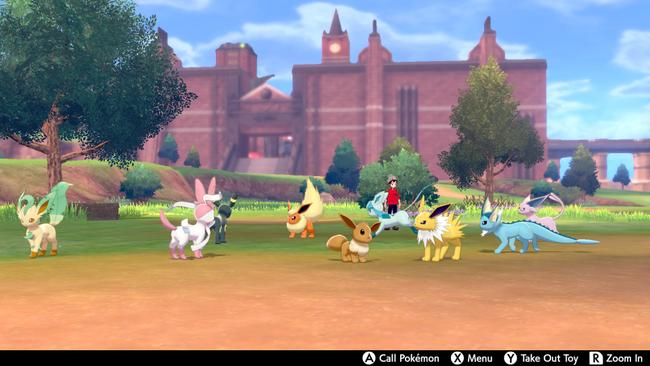
“Less than the 3DS games” probably sums up most of my thoughts on the game as a whole. Obviously I haven’t talked about the elephant in the room of the games cutting most of the Pokedex this time around, but the reason for that is simple - it's the least of Sword and Shield’s problems, frankly. Rather, the problem I have is that despite the cuts, and the higher price tag, I have trouble determining exactly where the justification for either of them comes from having actually finished the game. There are bits and pieces of the overall experience where I saw potential that Gamefreak could build upon, but none of the game rarely goes further than laying down these ideas.
Perhaps the best example of this is the game’s presentation. At the best of times, such as the seamless transitions between cutscenes before gym leader battles directly into throwing out your Pokemon and some of the more impressive looking areas (when playing on handheld at least), this feels like the home console Pokemon game that you might’ve dreamed of when you were a kid. At other times, however, it’s baffling some of the choices that were made. The game’s opening features a long, almost silent cutscene with a character talking and it was perhaps the first time I was wishing that Pokemon would have voice acting. As cool as the animations were leading up to and directly following gym leader and rival fights could be, I definitely felt those could’ve used voice acting too. Maybe it’s a nitpick, but it absolutely took me out of the experience quite a bit, and Pokemon as a franchise absolutely could’ve afforded it. Especially with the game’s higher price tag.
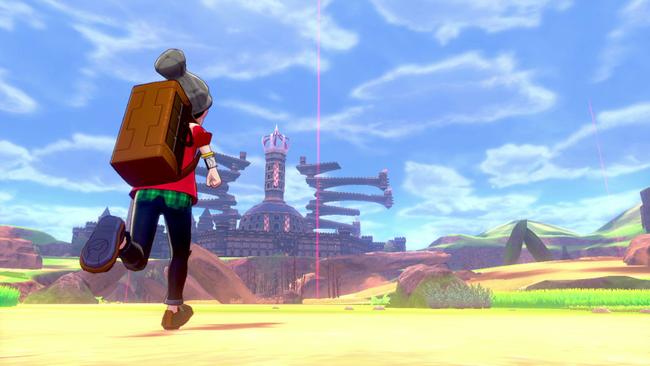
For all the good that the Wild Area does, it looks ugly at the best of times, and downright unacceptable at the worst. Honestly – don’t even bother trying to play the game online when you’re in the Wild Area, as the framerate suffers immensely. More than that, I experienced frequent stutters and hitches whenever a character model for another trainer would load into view. It’s just not worth it. Towns, much like routes, don’t have much going on – many of them are little more than a gym, a Pokemon center, and a building or two. Again, this wouldn’t be a problem, but especially later in the game every town has a gym, so you don’t even have towns that lack a gym to make up the difference. In the end, the lack of scale makes the Galar region feel much smaller than Gamefreak probably intended.
Animations for some attacks, particularly the new starter Pokemons’ signature moves are great, but most of the moves in the game are very simple and don’t always map well with each Pokemon’s model. That’s fine, but there was certainly room for improvement, and some moves (like Double Kick) had embarrassingly bad animations. It’s obvious that an effort was made to improve some of these animations with the jump to a stronger system, but so many look nearly unchanged from their 3DS incarnations, and entirely out of place for the much stronger console. Don’t get me started on some of the worse cutscene animations, either – I’ve seen 50~ person JRPG developer manage more consistent animation work, and I want to hope Gamefreak is capable of at least that much or more.
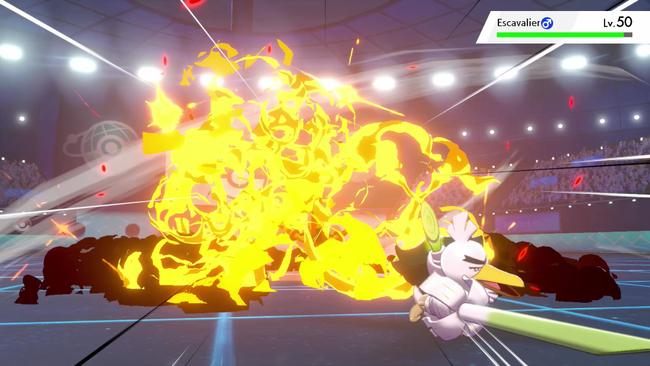
As I alluded to, the game’s story and pacing sort of fall apart at the end. The last two gyms in the game lack the exciting gym challenges that the rest have, and the already middling story about Galar’s history and the Dynamax phenomenon clearly feels like it was supposed to have a bit more than it ultimately ended up with. I loved the interactions between the secondary rivals Marnie and Bede, but especially Bede felt a bit underutilized. It’s frustrating because I firmly believe that the potential was there and it was just squandered.
I firmly believe that the games would’ve benefited from another year in development. Even if the region itself hadn’t seen many changes, just patching up the presentation a bit, adding a little more content to mess with during the post-game, and fixing the story’s unfortunate pacing could’ve done this game wonders. There was a chance for these games to be some of the best in the series, and it’s just depressing that the final product that we’re left with is so utterly flawed. What was cut from the experience wasn’t worth what sparse improvements that the games received, and what we got feels like it should match the 3DS games’ price-point, and not a $60 Switch game’s. Pokemon deserves better, and I don’t think that’s greedy to hope for.